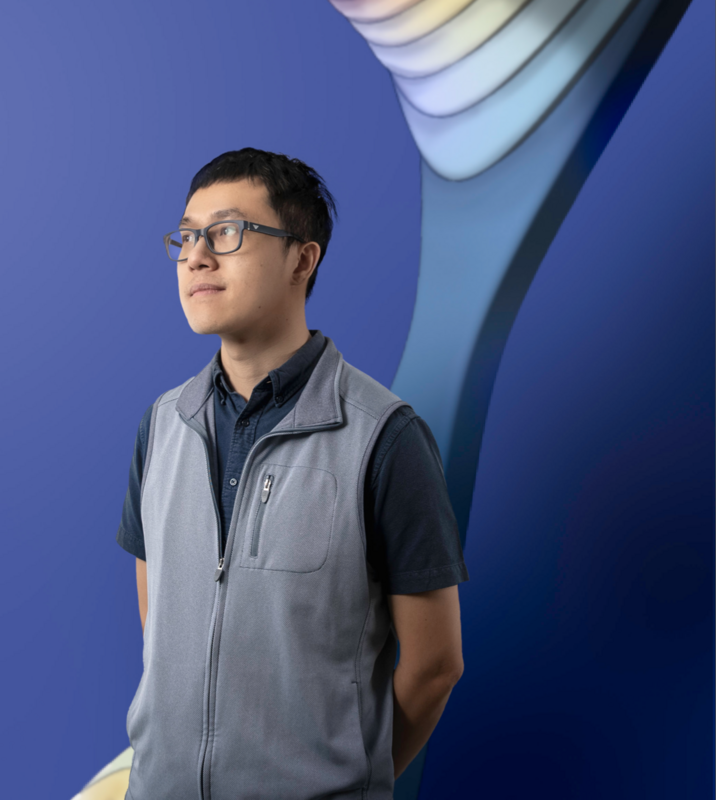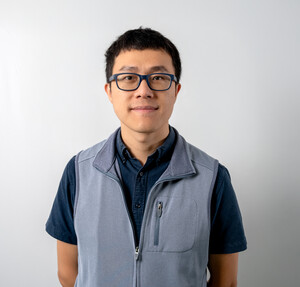
‘By exploring quantum electrodynamics, we hope to develop technologies based on
free-electron-light interactions.’
 Professor Yi YANG
Professor Yi YANGBelinda Hung Outstanding Young Professor
Assistant Professor of the Department of Physics
- 2024 Xplorer Prize
- 2024 Croucher Tak Wah Mak Innovation Award for Pioneering Photonics Research
- 2023 Named a Physical Science Fellow in Asian Young Scientist Fellowship
- 2022 NSFC Excellent Young Scientists Fund (Hong Kong and Macau)
- 2022 Innovators under 35 (China) by MIT Technology Review
Research Interests:
Topological photonics; plasmonics; photonic crystals; free electron optics.
When most people think of light, they imagine something simple—sunshine, a lamp, or maybe a laser pointer. But for Professor Yi Yang, light is a gateway to a hidden world of quantum possibilities.
An internationally recognised expert in nanophotonics and free-electron optics, Yang is pioneering research that could redefine how we use light and free electrons to power the technologies of tomorrow. Yang’s work focuses on studying the intricate dance between free electrons and light, a field with exciting potential for quantum science, nanoscale devices, and advanced imaging technologies.


The artistic illustration above is the interaction between free electrons and flat bands of a photonic crystal slab. Image credit: Lei CHEN
Elucidating the quantum Strength of Free-Electron Optics
At the core of Yang’s research lies a fundamental question: How can we make free electrons and light interact in stronger, more meaningful ways? His team has uncovered new ways to amplify these interactions, which could lead to quantum light sources, compact particle accelerators, and even more efficient radiation devices.
‘Free electrons are like a blank canvas,’ Yang explains. ‘By controlling how they interact with light, we can create entirely new effects—things like quantum entanglement or enhanced radiation generation. These aren’t just theoretical ideas; they have the potential for real-world applications in quantum computing, imaging, and beyond.’
In one of his recent studies, Yang’s team identified the optimal conditions for maximising the quantum coupling between photons and electrons. ‘It’s like finding the sweet spot,’ he says. ‘This discovery could help us design better quantum systems and even improve technologies like electron microscopy.’
Exploring Light at the Nanoscale
Beyond free electrons, Yang’s work also delves into how light interacts with materials at the extreme nanoscale. Imagine devices so small they operate at the level of individual atoms and molecules. His research in this area has implications for everything from ultra-precise colour displays to next-generation nanolasers.
‘We’re looking at how materials behave when light hits them at scales smaller than a virus,’ Yang says. ‘This opens up possibilities for creating new kinds of optical devices and improving existing technologies.’
One breakthrough from his lab involved studying the quantum surface properties of gold. ‘Gold isn’t just a shiny material—it has fascinating quantum behaviours,’ Yang explains. ‘By understanding these properties, we can build more efficient and innovative nanophotonic devices.’
A ‘Quantum Vision’ for Tomorrow
For Yang, the ultimate goal is to turn his discoveries into practical tools that benefit society. Whether it’s creating compact radiation sources, advancing quantum computing, or improving medical imaging, his research is driven by the desire to make a tangible impact.
‘Science isn’t just about answering questions — it’s also about creating something meaningful,’ Yang reflects. ‘Every experiment we run, every equation we solve, gets us one step closer to technologies that could change the world.’
With his passion for discovery and relentless drive, Yang is not only advancing the frontiers of nanophotonics but also inspiring the next generation of scientists to dream big and push the boundaries of what’s possible.
| < Previous | Next > |

